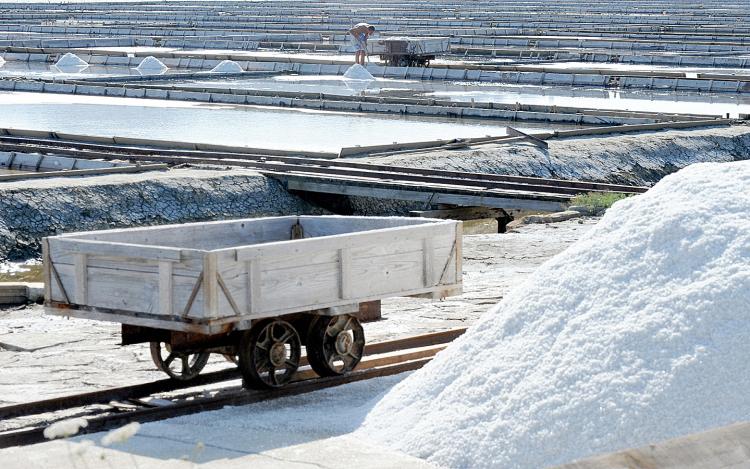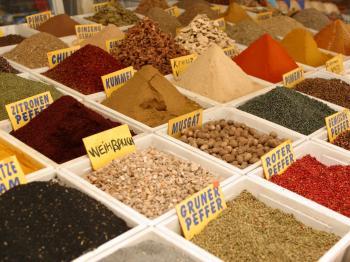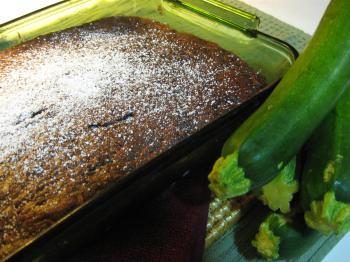Certain restaurants even offer gourmet salt as condiments. One of these salts, Australian Murray River Pink Flake salt crystals are light and delicate, peach-colored flakes that have a wonderfully mild flavor. Its texture is ideal for use as a finishing salt, to be sprinkled over a completed dish. The crystals melt quickly and evenly, making Murray River flake salt ideal for putting the finishing touch on roasts or grilled meats. The source of the river’s water is the snowy Australian Alps where salt-tolerant algae secrete a reddish pigment, carotene, giving this gourmet salt its color.
One of my favorite varieties of salt is the black Hawaiian salt. Having both kinds on the table when entertaining at home is a great conversation starter. Such indulgence comes at a price, though: One pound of the Australian delicacy costs $19.00, while the Hawaiian variety retails at $9.95 for 6 ounces. At these prices, you’d better not spill any.
We have used the more traditional varieties of salt for ages in food preparation, in religious rituals, as a food preservative, as a cattle-feed additive as salt licks, and as a helpful substance in the garden to keep pests and weeds away.
Salt is produced in different forms: unrefined salt, such as sea salt, refined salt, also know as table salt, and iodized salt. But what are the sources for this vital mineral? How is this life-giving mineral produced? By evaporation of seawater or brine from other sources such as wells and lakes and by mining rock salt. In damp regions of the globe it has a tendency to cake, so certain manufacturers add anti-caking agents, which do not affect the flavor. The total world production of salt seven years ago was 210 million tons, the top producers being the United States, China, Germany, India, and Canada, in that order.
The oldest records for salt mining date from 6,000 B.C., in Lake Xiechi near Yuncheng, in China’s Shanxi Province. Salt has been the best-known food preservative for millennia and has also been traded as a precious commodity by peoples who had scant supplies of this resource. The Tuareg tribes of the Sahara maintained special routes to guide their salt caravans through the desert. Their trade has now declined, but as late as the 1960s, these nomads still transported 15,000 tons of salt across the forbidding sands. The Celts grew rich during the first millennium B.C. with the trade of salt and salted meats with ancient Greece and Rome in exchange for wine and other luxuries. Mahatma Gandhi led the famous Salt Satyagraha, the salt march in which 10,000 people participated to protest British prohibition of making their own salt from the sea. The civil disobedience was more than a protest relating to salt: It inspired the Indian independence movement.
Religious practices have also included the use of salt, and several renowned sayings are based on this mineral. The prophet Mohammed is credited with saying, “Salt is the master of your food; God sent four blessings from above: fire, water, iron, and salt.” Hindu mythological rites use salt in housewarming ceremonies and weddings. The Japanese Shinto religion uses salt as a means of purification of specific places and people and for Sumo wrestling events. Salt per se is not a traditional condiment in many Asian cultures, though their quite salty fish sauce, soy sauce, and oyster sauce takes the place of salt. The Bible has numerous references to salt. Aztec mythology’s fertility goddess presided over salt and salt water, and the ancient Egyptians and Romans invoked their gods with salt offerings. The word “salary” actual refers to salt: Ancient Roman soldiers were paid in salt!
What in our modern lives accounts for the most salt consumption? Food use accounts for a mere 18 percent of salt consumption worldwide. The majority is sold for industrial use because of its versatility in the manufacture of so many things. For example, pulp and paper production, setting dyes in textiles, and in the making of soaps and detergents. What would happen if we did not consume enough salt or too much? Too much or too little salt in the diet can lead to muscle cramps, dizziness, or electrolyte imbalance, wich could cause severe or fatal neurological problems.
I am fond of salt. I prefer the purest table salt available, kosher salt or canning salt, as it is known in the United States, without any additives. To prevent possible caking, I add a few grains of raw rice to my saltshaker. My father taught me to greatly improve the taste of freshly brewed coffee by adding a pinch of salt before adding the boiling water. When I am really tired from a long day, I run warm water into the tub and add several hands full of salt and soak in it. I find this quite relaxing.
The following are instructions for making one of my all-time favorite appetizers, a salt-cured fish, a delicacy I first tasted in Norway 50 years ago and have reproduced in my home ever since.
Buried Salmon
2 salmon fillets (or other good, firm fish fillets, all bones removed) skin left on
1 cup good table salt plus 1/2 cup sugar
1 tablespoon ground pepper
1 tablespoon allspice powder
2 large bunches fresh dill
1/4 cup excellent quality vinegar
Good salad oil, for later
1 heavy river rock, the size of a fist (for a weight)
Get the fish as fresh as possible. Cut it into sections to later fit fairly snugly into a glass jar or bowl with a cover.
Mix thoroughly the salt, sugar, and spices.
Gently rub both sides of the fish generously with the salt mixture. Put additional salt mixture into the bottom of the glass jar or bowl. Layer fish pieces, covering each layer generously with the fresh dill. Sprinkle any remaining salt mixture over the top piece of fish and finish with the last of the dill. Place a clean rock into a Ziploc bag and put it on top of the fish pieces.
Gently pour the vinegar over the fish, disturbing the salt as little as possible. Put the lid on and place the filled jar or bowl into the coldest part of your refrigerator for at least three days. I leave mine in for as long as five days. The fish will take on a beautiful color, become firm, cured, and cooked from the salt, sugar, and spices.
When the curing time is up, remove the fish from the container and wipe it free from the fill and salt. Place onto a cutting board and cut against the grain on a slant into slices, about 1/8 inch thick. Have ready another clean jar and put a bit of oil in the bottom. Now place all the sliced goodness into the jar, cover with oil and store in the fridge again.
As long as the oil cover the fish slices, it prevents air from causing any spoilage. Properly refrigerated, the appetizer thus keeps for three weeks. When ready to serve, remove the desired quantity from the oil, drain it on paper toweling, arrange on a platter, offer crackers and a bit of sour cream and serve with pride.
For you less adventures gourmets, you can always pour hot salt water onto the weeds in the garden, which destroys them permanently.
I hope you are well fixed for salt.






